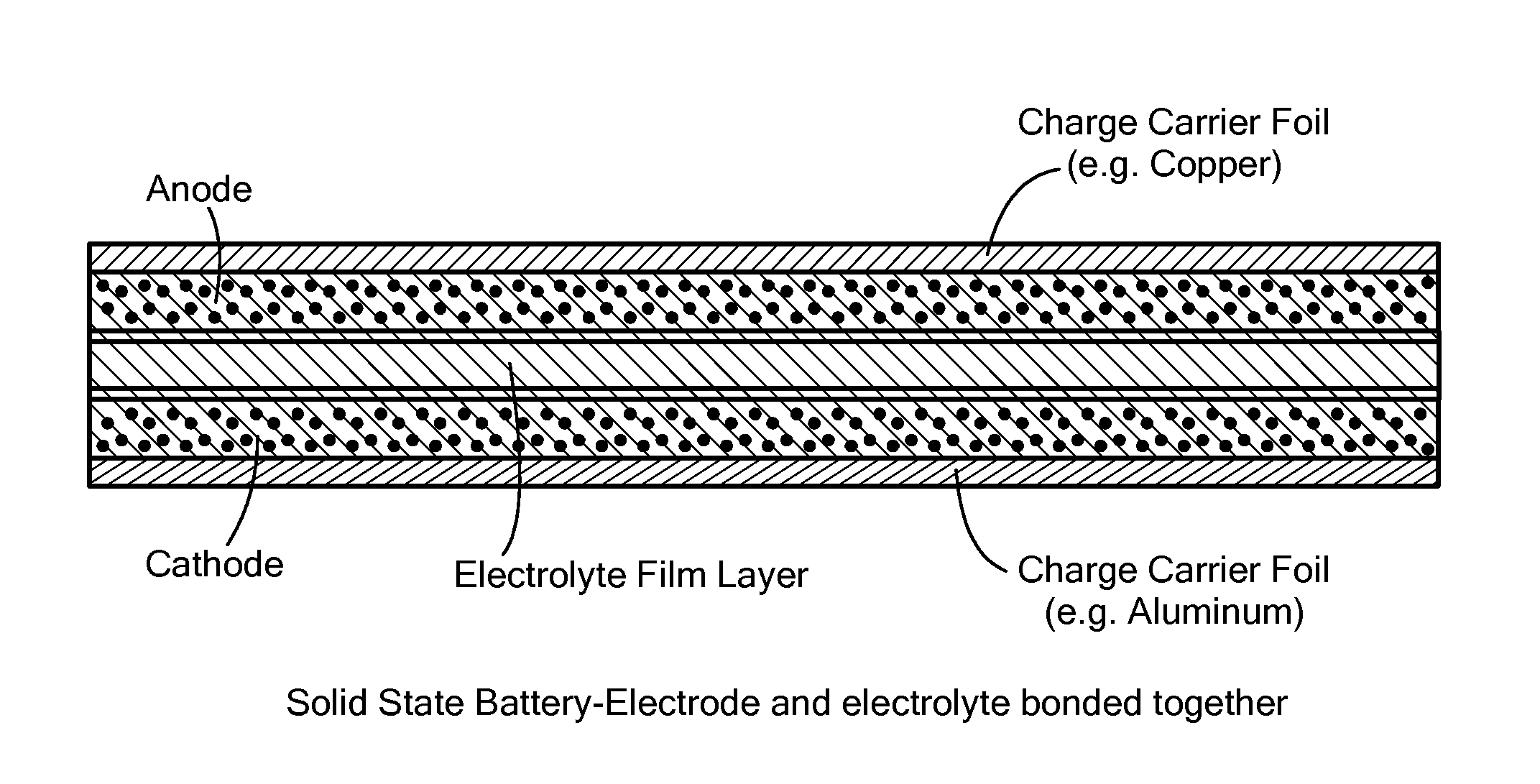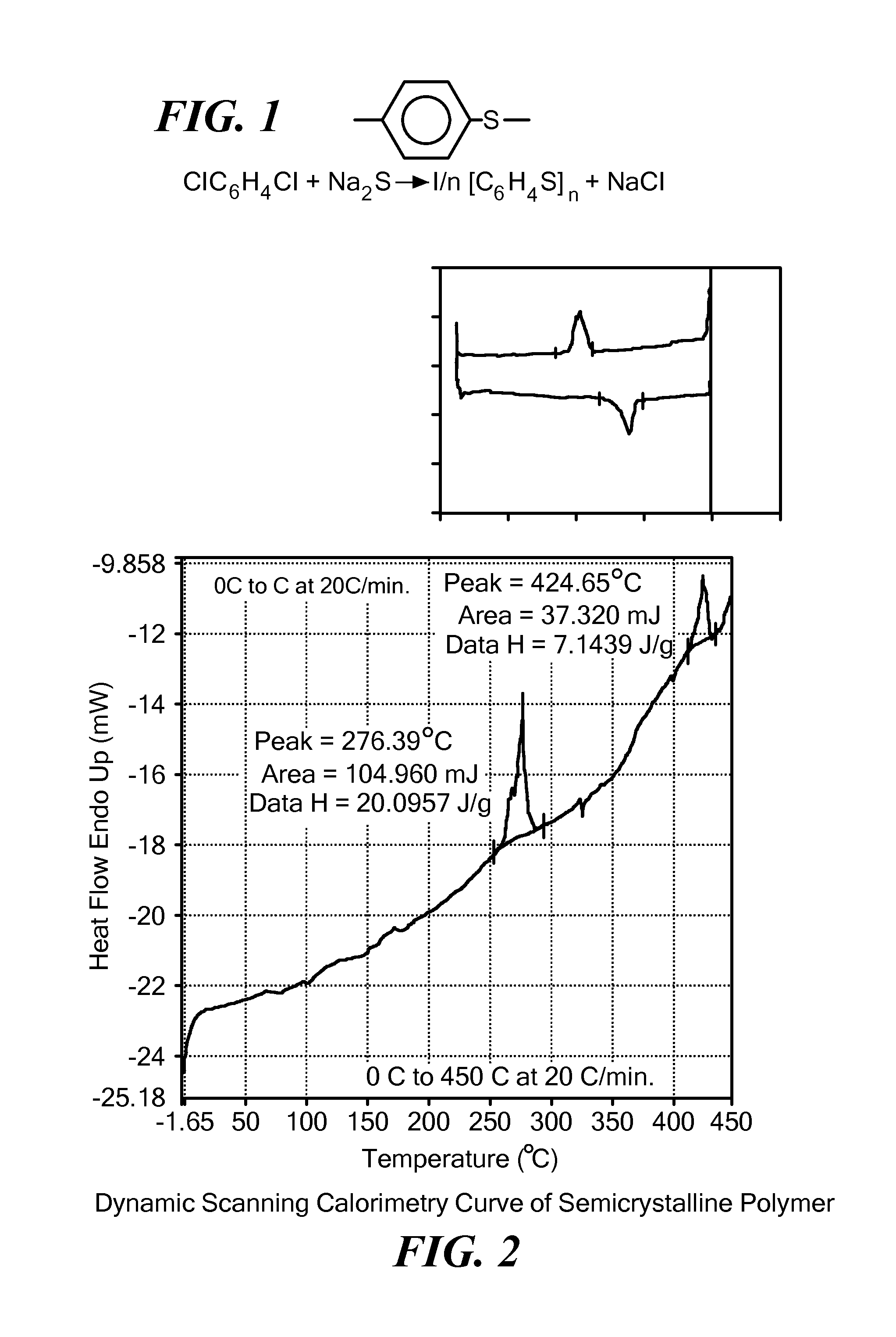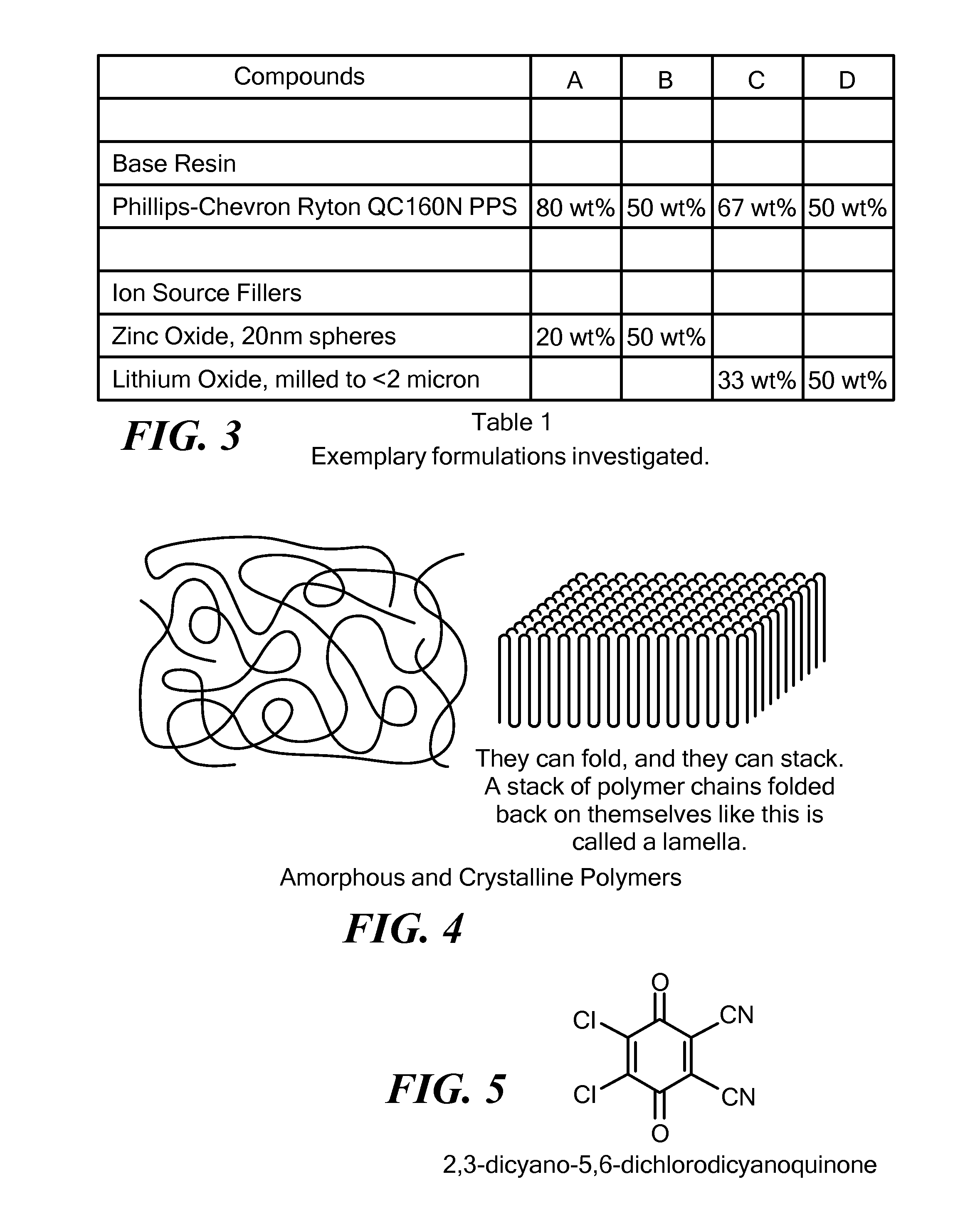Solid, ionically conducting polymer material, and methods and applications for same
a polymer material and ion-conducting technology, applied in the direction of non-metal conductors, cell components, sustainable manufacturing/processing, etc., can solve the problems of slow charge time, limited rechargeable number, and eventual failure of batteries of conventional lithium ion batteries, etc., to achieve low effective aqueous porosity, low or high surface area
- Summary
- Abstract
- Description
- Claims
- Application Information
AI Technical Summary
Benefits of technology
Problems solved by technology
Method used
Image
Examples
example 1
[0156]Solid polymer electrolyte was made by mixing PPS base polymer and ion source compound LiOH monohydrate in the proportion of 67% to 33% (by wt.), respectively, and mixed using jet milling. DDQ dopant was added to the resulting mixture in the amount of 1 mole of DDQ per 4.2 moles of PPS. The mixture was heat treated at 325 / 250° C. for 30 minutes under moderate pressure (500-1000 PSI). After cooling, the resulting material was grinded and placed into NMR fixture.
[0157]Self-diffusion coefficients were determined by using pulsed field gradient solid state NMR technique. The results shown in FIGS. 19 and 20 indicate, respectively, that Li+ and OH− diffusivity in the solid polymer electrolyte is the highest of any known solid, and over an order of magnitude higher at room temperature compared to recently developed L10GeP2S12 ceramic at much higher temperatures (140° C.) or the best PEO formulation at 90° C.
example 2
[0158]PPS base polymer and ion source compound LiOH monohydrate were added together in the proportion of 67 wt. % to 33 wt. %, respectively, and mixed using jet milling. Cathode was prepared by additionally mixing 50% β-MnO2 from Alfa Aesar, 5% of Bi2O3 and 15% of C45 carbon black. DDQ dopant was added to the resulting mixture in the amount of 1 mole of DDQ per 4.2 moles of PPS.
[0159]The mixture was compression molded onto stainless steel mesh (Dexmet) at 325 / 250° C. for 30 minutes under moderate pressure (500-1000 PSI), yielding cathode disc 1 inch in diameter and about 0.15 mm thick. The resulting disc was punched to 19 mm diameter and used as a cathode to assemble test cells, containing commercial non-woven separator (NKK) and Zn foils anode. 6M LiOH was added as electrolyte.
[0160]Cells were discharged under constant current conditions of 0.5 mA / cm2 using Biologic VSP test system. The specific capacity of MnO2 was 303 mAh / g or close to theoretical 1e− discharge. FIG. 21 illustrat...
example 3
[0161]PPS base polymer and ion source compound LiOH monohydrate were added together in the proportion of 67% to 33% (by wt.), respectively, and mixed using jet milling. Cathode was prepared by additionally mixing 50% β-MnO2 form Alfa Aesar, 5% of Bi2O3 and 15% of C45 carbon black. DDQ dopant was added to the resulting mixture in the amount of 1 mole of DDQ per 4.2 moles of PPS.
[0162]The mixture was compression molded onto stainless steel mesh (Dexmet) at 325 / 250 C for 30 minutes under moderate pressure (500-1000 psi), yielding cathode disc 1″ in diameter and 1.6-1.8 mm thick.
[0163]The resulting cathodes were used to assemble test cells, containing commercial non-woven separator (NKK) and Zn anode slurry extracted from commercial alkaline cells. 6M KOH solution in water was used as electrolyte.
[0164]Cells were discharged under constant current conditions using Biologic VSP test system. The specific capacity of MnO2 was close to 600 mAh / g at C / 9 discharge rate (35 mA / g), or close to t...
PUM
| Property | Measurement | Unit |
|---|---|---|
| Fraction | aaaaa | aaaaa |
| Fraction | aaaaa | aaaaa |
| Fraction | aaaaa | aaaaa |
Abstract
Description
Claims
Application Information
 Login to View More
Login to View More - R&D
- Intellectual Property
- Life Sciences
- Materials
- Tech Scout
- Unparalleled Data Quality
- Higher Quality Content
- 60% Fewer Hallucinations
Browse by: Latest US Patents, China's latest patents, Technical Efficacy Thesaurus, Application Domain, Technology Topic, Popular Technical Reports.
© 2025 PatSnap. All rights reserved.Legal|Privacy policy|Modern Slavery Act Transparency Statement|Sitemap|About US| Contact US: help@patsnap.com



